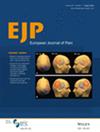Intermittent Hypoxia Triggers Glial Cell Activation, GluN2B Receptor Upregulation and Hyperalgesia in a Mouse Model of Sleep Apnea
Abstract
Background
Sleep apnea is a condition that disrupts physiological homeostasis, leading to neuronal dysfunction and triggering a cascade of neurobiological effects. Individuals with sleep apnea and related disturbances may experience increased anxiety and sensory dysfunction, though these phenomena remain underexplored.
Methods
In this study, we used a mouse model to examine the effects of sleep apnea-induced intermittent hypoxia (IH) on sensory function and the mechanisms underlying chronic IH. Mice were exposed to chronic IH for 10 days to assess neuronal inflammation and neuronal plasticity changes in key areas such as the spinal cord and periaqueductal grey (PAG) to understand how IH alters sensory conduction pathways.
Results
Our analysis revealed that in mice exposed to IH, astrocytes and microglia were significantly upregulated in the dorsal and ventral horns of the lower spinal cord, accompanied by elevated cytokine levels (IL-1β and TNF-α), suggesting an inflammatory response. Moreover, a significant increase in astrocyte cells within the PAG was also found. Furthermore, chronic IH was associated with increased glutamate receptor subunit GluN2B expression in the spinal cord.
Conclusions
These findings collectively suggest that neuronal inflammation and alterations in synaptic plasticity are central to the development of hyperalgesia in IH-exposed mice. Our results provide crucial mechanistic insights into how IH can induce heightened pain sensitivity and underscore the importance of early therapeutic intervention to address sensory complications in patients with chronic sleep apnoea.
Significance Statement
Our study is the first to demonstrate that increased glial cells and elevated NMDA GluN2B expression in the spinal cord and PAG may drive sleep-related IH-induced hyperalgesia, linking sleep apnea to heightened pain sensitivity. Targeting central nervous system inflammation or GluN2B receptors could be crucial for mitigating the health impacts of sleep apnea.

 求助内容:
求助内容: 应助结果提醒方式:
应助结果提醒方式:


